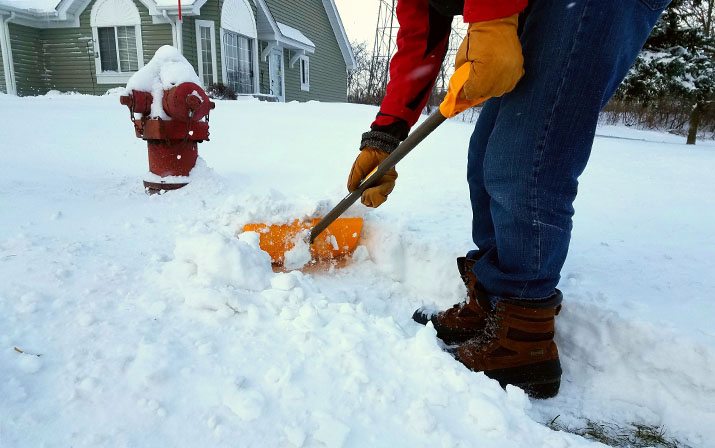Don't neglect fire and CO safety this winter: Keep vents, gas meters and fire hydrants clear
Dec. 5, 2022
 The snowy season has truly arrived here in Minnesota.
The snowy season has truly arrived here in Minnesota.
While we mostly think of winter storm hazards as slick, snow-covered roads and walkways, there are also some fire and carbon monoxide safety issues that become a problem when the snow buries our yards and we hunker down inside our homes.
Carbon monoxide poisoning incidents peak when it is cold and snowy due to increased use of heat sources like fireplaces and wood stoves. Blowing snow can also block exhaust vents on the sides or tops of homes.
There are some simple steps to prevent a CO incident:
- Clear snow from outdoor furnace, dryer, fireplace or oven vents.
- Test CO alarms to ensure they are working properly.
- A CO alarm should be on each level of a home and within 10 feet of sleeping rooms.
- We all do this, but you shouldn't: Run your car in your garage. Why? CO can leak into your house faster than you think.
When you're digging out of our regular snowfalls this winter, remember to clear out your gas meters, any vents on the outside of your house and your neighborhood fire hydrants.
Natural gas meters outside your home need to be clear of snow and ice, which can block the meter's regulator vent and cause it to malfunction. If it isn't working properly, it could lead to an interruption in service, a possible gas leak, fire or even an explosion.
It's dangerous to use a snow blower near a gas meter. The best way to clear the snow and ice from your meter is just by using your hands or a small broom. If you are concerned that your meter's regulator vent is blocked or malfunctioning, give your utility company a call.
While you're out there clearing snow, don't neglect your neighborhood fire hydrant. Fires tend to spike in the cold-weather months, especially when we have deep cold spells. We're spending more time in our homes, our furnaces are working hard and we're using alternative heat sources like space heaters.
Space heaters can start a fire quickly if they aren't used properly, and firefighters can't help you in an emergency if they can't find the hydrant. Fires double in size every 60 seconds. Every second counts. You don't want to watch your house burn down as firefighters waste precious time digging out a hydrant.
Shovel a 3-foot path around your hydrant and don't let it get buried in snow. If you can't see your neighborhood hydrant, neither can firefighters in an emergency.
Always make sure you have working smoke and carbon monoxide detectors. Those alarms can save your life, but only if they are working.

